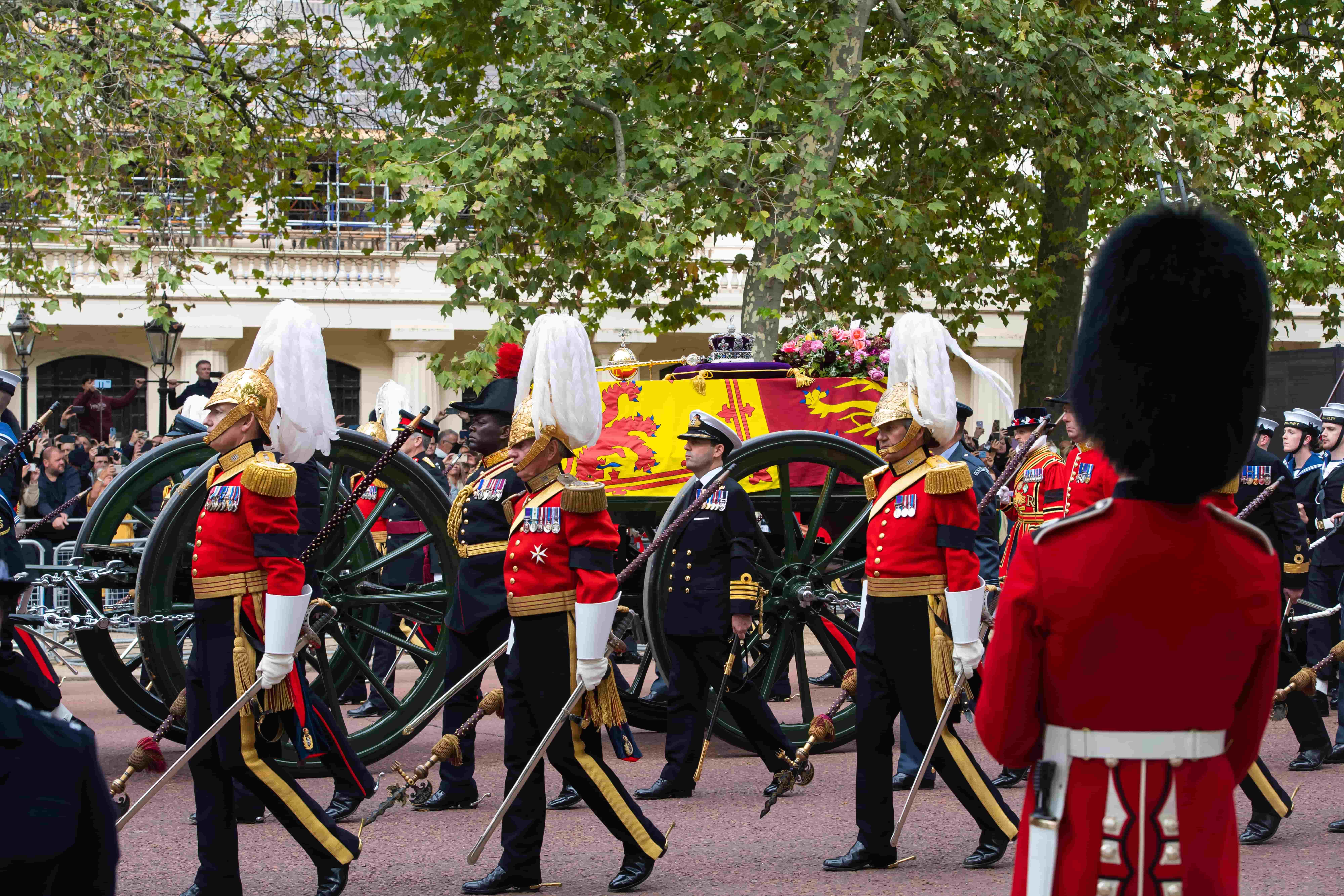
One year ago, on Monday 19th September 2022, Queen Elizabeth II was laid to rest. Her state funeral was the first held in Britain since Winston Churchill’s in 1965.
The funeral service was attended by 2,000 people, there were tens of thousands of people gathered on the streets of London, and billions of us watched the event live on television. Here, we have everything you need to know about the funeral of Her Late Majesty…
The Funeral Service
Since Wednesday 14th September 2022, The Queen had been lying-in-state at Westminster Hall, where thousands of people queued for hours upon hours to view her coffin and say their personal goodbyes. This came to an end during the early hours of Monday 19th September, where her coffin was taken to Westminster Abbey for her funeral service.
A state funeral follows strict protocol rules, such as a military procession. Following a tradition dating back to the funeral of Queen Victoria, around 140 Royal Navy sailors pulled the State Gun Carriage and carried the coffin to the Abbey. It was topped with the Royal Standard, and royal regalia such as the Imperial State Crown and the Sovereign’s orb and sceptre. Our new King, Prince William, Prince Harry and other members of the Royal Family all followed the procession carriage as the route was lined by a guard of honour, the Royal Navy and Royal Marines.
The service in Westminster Abbey began at 11:00am, and paid tribute to Queen Elizabeth II’s incredible reign, and remarkable life of service. The service was conducted by the Dean of Westminster David Hoyle, the Archbishop of Canterbury gave the Sermon and Commendation, and the Prime Minister Liz Truss and the Secretary General of the Commonwealth both read Lessons. At the end of the service, the Last Post was played, which was followed by a two-minute silence and finally the national anthem which was played by the Sovereign’s piper.
The Procession
After the funeral service, The Queen’s coffin was drawn in a walking procession from Westminster Abbey to Wellington Arch via The Mall. This procession featured around 3,000 military personnel, and around a million people lined the route through central London. In addition to marching in the procession, the regular RAF bands provided continuous music throughout the procession, including funeral marches by Beethoven, Mendelsohn and Chopin. Big Ben also tolled for the duration of the procession, which marched at 75 paces to the minute, a speed reserved for funerals.
Once the coffin had reached Wellington Arch, it was then placed in the State Hearse which transported The Queen to Albert Hall, Windsor. Once the coffin had reached Windsor, the Hearse joined a procession which travelled along to St George’s Chapel. Members of the Royal Family were in attendance of this procession, and Minute Guns were fired on the East Lawn by The King’s Troop.
The Committal Service
At 4:00pm, the coffin reached St George’s Chapel and the committal service commenced. This service was much more private and personal, with only around 800 guests in attendance, most of whom were family and current and former staff of the Queen’s household and other private estates. The service was conducted by Dean of Windsor David Conner, and Archbishop of Canterbury Justin Welby provided a blessing. The Imperial State Crown and the Sovereign’s orb and sceptre were removed from the coffin, and The King placed the Queen’s Company flag or the Grenadier Guards on top.
The Sovereign’s Piper played a Lament as The Queen’s coffin was lowered into the Royal Vault and the National Anthem was sung to conclude the service. Later that evening, The Queen was interred with her husband, Prince Philip, in the King George VI Memorial Chapel.
Our latest range features designs that recall the State funeral and military procession with which our nation laid to rest Britain’s longest reigning monarch. You can take a look at these incredible sovereigns HERE.
